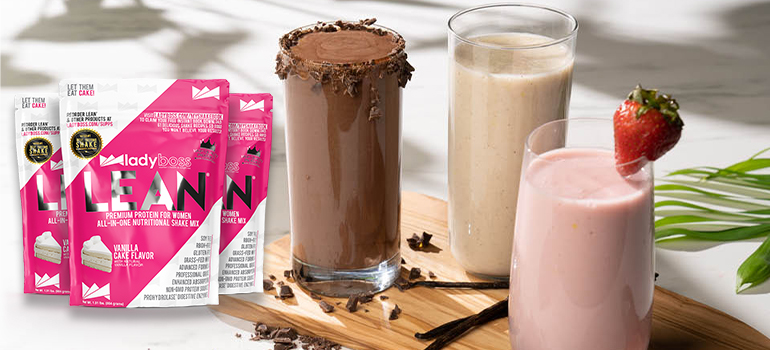Talk of GMOs is in our news, our magazines, and now it shows up on labels in our grocery stores. But what are they exactly? And what should we know to help decide if we need to avoid them or not?
The increasing use of GMOs in our food and the controversy surrounding it just seems to make them one more thing to worry about. You may find yourself wondering if there is a reason to worry about genetically engineered food. Don’t we already have enough on our plates to be concerned about? I mean, are GMOs really as bad as they seem?
Naturally, there are opposing sides when it comes to the question, “Are GMOs safe?” Some argue that there is nothing in GMOs that pose a threat to us and our environment. Others, of course, disagree.
Let’s take a look at the pros and cons of GMOs so that we can decide whether or not we consider them a threat to our families and us.
I’d Really Like To Know What a GMO Even Is!

Not exactly sure what a GMO is? You’re not alone. You hear these terms, but then no one ever seems to explain what they mean! Well, we can fix that.
GMO stands for: genetically modified organisms.
Great! But what does that mean?
A genetically modified organism is any organism whose genetics have been altered using genetic engineering techniques. A great example of this is when scientists took the genetics from a spider that helps it produce silk for its webs and inserted it into the DNA of an ordinary goat to create silk protein in the goat’s milk.
Yes, you read that right. The scientists took web-making genetics from a spider and inserted it into goats.
Um, why?
As it turns out, the goat’s milk becomes laden with silk protein and is harvested. The silk protein is then isolated to make a lightweight, ultrastrong silk material with a wide range of industrial and medical uses, from airbags to artificial tendons and ligaments.
But the real debate about GMOs and their safety is in regards to the food that shows up in our grocery stores.
Our World of Genetically Engineered Food

There is a lot of discussion about the dangers of genetically modified food.
According to the National Library of Medicine, genetically modified foods have had foreign genes from other plants or animals inserted into their genetic codes. As a result, we now have foods that are consistently flavored and resistant to disease and drought.
We see this really play out in our more abundant scale agricultural crops, such as corn, soy, canola, and cotton. In fact, 90% of those crops sold in the United States have been genetically modified. This includes your cooking oils and the ever-controversial high fructose corn syrup that now seems to be in everything.
For farmers, the appeal of genetically modified crops is higher-yield (meaning they produce more) as well as pest resistance. Scientists have discovered a way to implant a bacteria that then creates a protein within a crop that has proven resistance to insect pests. The pro to this method is that it reduces the need for wide-spread spraying of synthetic pesticides.
But nature is a finely tuned system of checks and balances, so where we gain one thing, does it cost us another?
The Potential Cost of GMOs
If it makes crops pest-resistant and helps farmers, then what are the consequences of GMOs?
There is evidence of a possibility that genetically modified organisms could be inbred with their organic counterpart, which could lead to the possible extinction of the original.
An example of this is the banana tree. Banana trees are now grown entirely through genetic modification, the bananas themselves are entirely sterile, yielding no seeds for natural reproduction.
Other groups protesting genetically modified food argue that they have been linked to toxic and allergic reactions, sickness, sterile and dead livestock and have damaged virtually every organ of lab animals they have been studied on.
Since GMOs were introduced to the market in 1996, there has also been a noticeable increase in health conditions. The percentage of Americans with three or more chronic illnesses has jumped from 7% to 13% in a range of just nine years. Food allergies have also increased along with disorders such as autism, reproductive disorders, and digestive issues.
However, it must be noted that there has not been sufficient research to confirm that GMOs are the contributing factor to any of these claims.
Then Why Even Consider GMOs?

With all the debate surrounding genetically modified food, what positives could there possibly be? Well, it comes back to those high-yielding crops I mentioned before.
Supporters of GMOs point to the fact that genetically modified organisms result in sturdier crops with a higher yield. It also reduces the draw on natural resources, fossil fuels, and can provide nutritional benefits due to increased vitamin content in genetically modified foods.
Numerous respected organizations such as the World Health Organization, the U.S. National Academy of Sciences, and the American Medical Association have all reached the same conclusions. Consuming foods derived from genetically modified crops is no riskier than consuming the same foods containing ingredients from conventionally grown crops.
Nevertheless, while there is plenty of data claiming the safety of genetically modified crops, the subject is still relatively new in the scientific field. The overall effects have yet to be seen.
The More You Know
Choosing instead to eat food containing GMOs is strictly an individual choice. There are new laws in place that will help you identify if your favorite foods are genetically modified, making the decision easier.
First of all, a common misconception with GMOs is that the FDA (Food and Drug Administration) approves them before we eat them.
They don’t.
The FDA does have a voluntary process where seed developers can submit data showing that a genetically engineered crop, such as corn, is equivalent to its traditional counterpart and poses no health risk. But the FDA does not formally approve seeds made from those crops. And remember, the process is voluntary, to begin with.
Why is that exactly?
Well, technically, laws only require pre-market approval of “food additives.” What falls under that category are dyes or artificial sweeteners like aspartame. In 1992, the FDA deemed that inserting a gene into a crop does not make the protein it produces a food additive. Therefore, there is no formal approval from the FDA regarding the food or ingredients made from genetically engineered crops.
However, beginning in 2020, all food containing GMOs now must bear a label if it contains more than 5% of genetically engineered material. Under this new law, individual states are free to impose their own labeling requirements. Check your state’s laws on GMOs and their labeling requirements to make the right choice for you.
No End to the Debate
One thing is sure: The debate about the potential dangers of GMOs has no end in sight. But remember, you always have a choice. Hopefully, you now have a better understanding of GMOs, and along with the new labeling laws, your ability to make that choice became easier.
With that said, I will never miss a chance to offer my support to locally grown organic producers and local farmers’ markets. How can you go wrong with traditional, organically grown fruits and vegetables?
As the saying goes, if it was good enough for our grandmothers, then it is certainly good enough for us.























